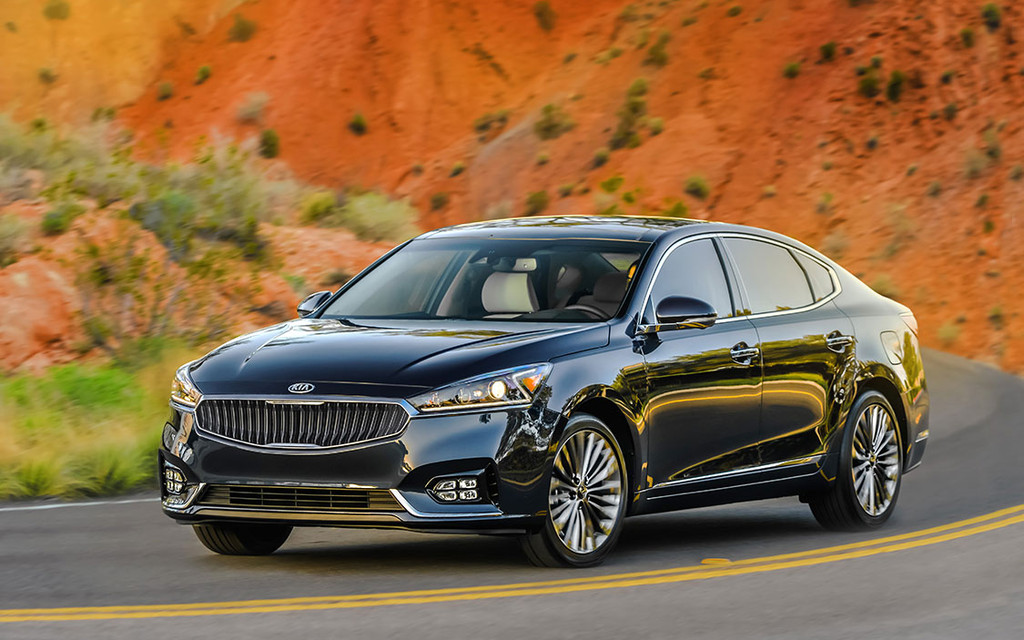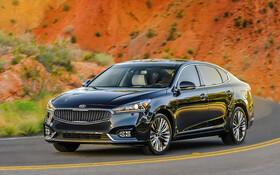Kia redesigns Cadenza sedan for 2017 model year
Kia has redesigned the Cadenza for 2017, with the sedan set to become the first vehicle sold with technology developed by the automaker's Drive Wise sub-brand.
Set to hit dealerships in late 2016, the second-generation Cadenza is the same length as its predecessor while riding on a slightly longer wheelbase, adding nearly a half-inch to rear passenger legroom, according to Kia.
The car is also wider and lower than the outgoing version, while its roof line has been stretched more than two inches.
It also gets an all-new look that includes a hexagonal, concave version of Kia's signature "tiger nose" grille that could be a sign of what's to come for the entire lineup.
Kia says the grille is available in a diamond pattern akin to the one featured on the 2016 Optima or with vertical blades, like the one pictured, depending on trim level.
Accenting both grilles are new headlights featuring Z-shaped daytime running lights, a pattern that is also found in the new Cadenza's LED taillights.
It rides on newly designed 18- or 19-inch alloy wheels depending on trim level.
Under the hood lies a revised version of Kia's 3.3-litre V6 mated to an eight-speed automatic transmission, a first for the automaker in a front-wheel drive layout.
The Cadenza's interior has also been reworked, and features "even higher quality materials than the preceding model," with four different interior colour combinations to choose from.
The latest generation of Kia's UVO infotainment system featuring Android Auto and Apple CarPlay is standard, while a 12-speaker Harman/Kardon audio system is available.
Other technology featured in the 2017 Cadenza includes a heads-up display system, which projects key driver information like speed and turn-by-turn navigation directions on the windshield, and a wireless smartphone charger.
It also boasts a host of advanced safety feature through Kia's new Drive Wise brand, including Advanced Smart Cruise Control with stop-and-go functionality, lane departure warning, forward collision warning, autonomous emergency braking, and a so-called Smart Blind Spot Detection System that detects unintentional drifting toward an adjacent vehicle and automatically brakes the opposite side front wheel to help maintain the vehicle's intended course.












